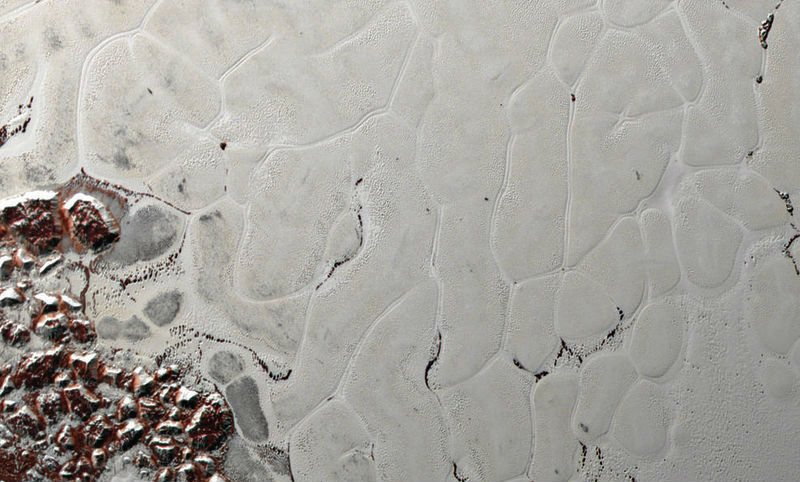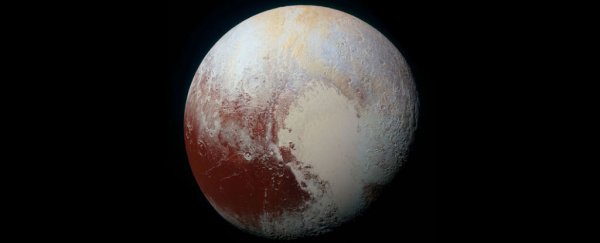It's easy to feel sorry for Pluto since it got demoted to non-planet status back in 2006, but if anything, our favourite cosmic misfit has only gotten more interesting since it broke out on its own.
Studies suggest it's got strange gravity waves, a beating heart, and the way it interacts with solar winds is unlike anything astronomers have seen in our Solar System. And now it looks like it's like a flowing, subterranean ocean.
If that strikes you as a little odd, yep, it's super weird. How can a planet that sits nearly 6 billon km (3.67 billion miles) away from the Sun not be frozen to the core?
That question has been bugging scientists since NASA's New Horizons probe made its flyby of Pluto last July and found evidence of tectonic activity upsetting its frigid surface that could only really be explained by a subterranean ocean sloshing below.
And now a new model confirms what NASA scientists have suspected, by revealing how Pluto would basically shrivel up like an overripe peach if it didn't have a liquid water giving its frozen crust a bit of room to move.
As Maddie Stone explains over at Gizmodo, when New Horizons sent back the clearest images ever captured of Pluto's surface, there was a strange lack of what scientists refer to as compressional tectonic features, which are expected to form if the inner layers of liquid had frozen into a denser form called ice II.
 The markings that gave away Pluto's secrets. Credit: NASA/New Horizons
The markings that gave away Pluto's secrets. Credit: NASA/New Horizons
"The formation of ice II would cause Pluto to experience volume contraction and compressional tectonic features to form on the surface," one of the team behind the model, Noah P. Hammond from Brown University, told the press.
In other words, Hammond's simulations showed that if Pluto's liquid ocean had frozen solid, it would have been crushed by the heavy outer shell into a dense ice II form.
Ice II is weird in that it shrinks as it freezes, rather than expanding like regular ice, so if Pluto had an ice II ocean beneath its icy crust, it would have caused the whole thing to shrivel up from the inside, in ways that would have been obvious on the surface.
"Since the tectonic features on Pluto's surface are all extensional and there is no obvious compressional features, it suggests that ice II has not formed, and that therefore, Pluto's subsurface ocean has likely survived to present day," says Hammond.
So what's keeping Pluto's suspected subterranean ocean so wet? The researchers think it's likely to the dwarf planet's simmering core, which generates a whole lot of heat from the decay of radioactive elements within.
While this means that Pluto seems to be more habitable - or perhaps slightly less inhospitable - than we thought, there's still not much chance of life there.
But what's significant in this finding is the fact that liquid oceans can exist on dwarf planets, moons, and even larger planets, without the tidal forces scientists had assumed were necessary for keeping things nice and flowing. Conor Gearin explains for New Scientist:
"The moons of gas giants, like Jupiter's moon Ganymede, have subsurface oceans because tidal forces from the planet keeps them sloshing around. In contrast, Pluto seems to have a liquid ocean despite not experiencing a large planet's tidal pull.
'You don't need tidal heating in order to have an ocean - that's an important lesson,' Francis Nimmo of the University of California at Santa Cruz says. 'It means that other big Kuiper Belt objects out there could have oceans, too.'"
Of course, nothing's confirmed until some robot drone dips its toes into Pluto's underground ocean, but the case is looking pretty strong for Pluto's sloshy insides.
The study has been published in Geophysical Research Letters, and can be accessed for free at arXiv.org.
